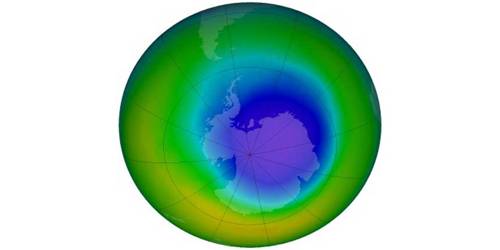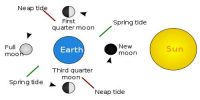Ozone Hole: It is a sharp seasonal decrease in stratospheric ozone concentration that occurs over Antarctica in the spring. First detected in the late 1970s, the ozone hole continues to appear as a result of the complex chemical reaction in the atmosphere that involves CFCs.
In the 1970s, scientists observed that chemical substances referred to as CFCs, which stands for chlorofluorocarbons, can attain the stratosphere and ruin ozone gas. This was a weighty discovery with global implications because most folks depend upon several products and home equipment that, whilst manufactured or used, release CFCs into the atmosphere. Aerosol spray cans, Styrofoam, air conditioner gadgets and fridges are some gadgets that make the list. The scientists started out claiming that CFCs make contributions to the formation of “holes” within the ozone.

Chlorofluorocarbons (CFCs) are gases once widely utilized in industry as coolants and propellants, prized for their strong and non-polluting nature. However, CFCs turned out to circulate throughout the globe and some made it up as high because of the stratosphere. Adequately inert at decrease altitudes, they had been damaged up at those scanty heights through extreme ultraviolet radiation from the solar (sun).
The term ‘ozone hole’ refers back to the depletion of the protective ozone layer within the higher surroundings (stratosphere) over Earth’s Polar Regions. Human beings, vegetation, and animals residing below the ozone hollow are harmed by means of the solar radiation now achieving the Earth’s floor—in which it reasons fitness troubles, from eye harm to pores and skin most cancers.
Excess ultraviolet exposure causes skin cancer, cataracts, and immune device damage in people, and injures animals, plant life, or even microscopic phytoplankton. A single chlorine molecule has a devastating effect, taking aside ozone molecule after ozone molecule.














